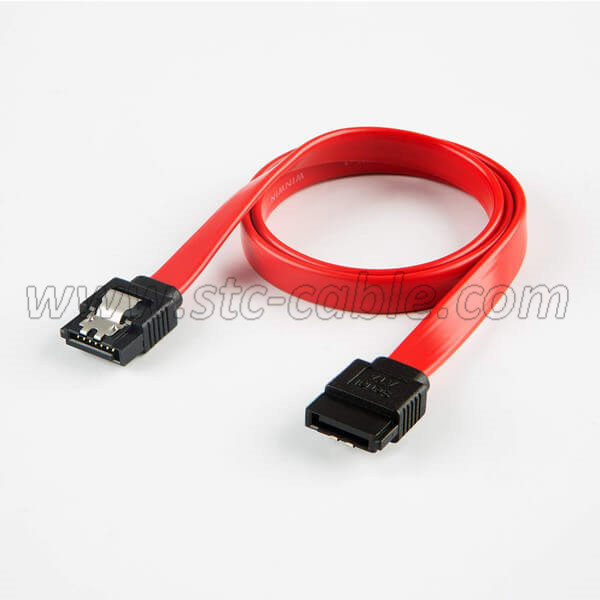Where do SATA cables plug into?
SATA cables connect storage devices like HDDs and SSDs to your motherboard. One end of the cable plugs into the storage device, while the other end goes into the motherboard. Typically, you’ll find the connector near the bottom of the motherboard1. To clarify further:
1. The SATA data cable connects to the motherboard’s SATA port (usually L-shaped) and the drive’s 7-pin slot.
2. The SATA power cable should not be plugged into the motherboard; instead, it connects to the drive’s 15-pin power slot
How do I troubleshoot a faulty SATA cable?
If you suspect a faulty SATA cable, here are some steps to troubleshoot:
1. Check Connections:
Ensure both ends of the SATA cable are securely plugged into the motherboard and the storage drive.
Re-seat the connectors to eliminate loose connections.
2. Swap Cables:
Replace the SATA cable with a known working one. Sometimes cables get damaged or develop faults.
Test the drive with the new cable to see if the issue persists.
3. Inspect for Damage:
Examine the cable for physical damage, such as frayed wires or bent pins.
If you find any issues, replace the cable.
4. Test with Another Drive:
Connect the suspect drive using a different SATA cable to rule out drive-specific issues.
If the new cable works, the original cable was likely faulty.
5. Check BIOS Settings:
Ensure the SATA port is enabled in your BIOS settings.
Confirm that the drive is detected by the system.
Remember, if the problem persists, it might not be the cable itself but rather the drive or motherboard. Troubleshooting step by step will help pinpoint the issue.
Are SATA cables obsolete?
While SATA’s market dominance has decreased to around 50% since the evolution of PCIe 3.0 due to the rise of superior interfaces, it isn’t entirely obsolete1. Many laptops still come with SATA SSDs, and they remain great for obtaining large storage capacities (e.g., 4TB and 8TB) at affordable prices.
Send your message to us:
Post time: Jul-08-2024
